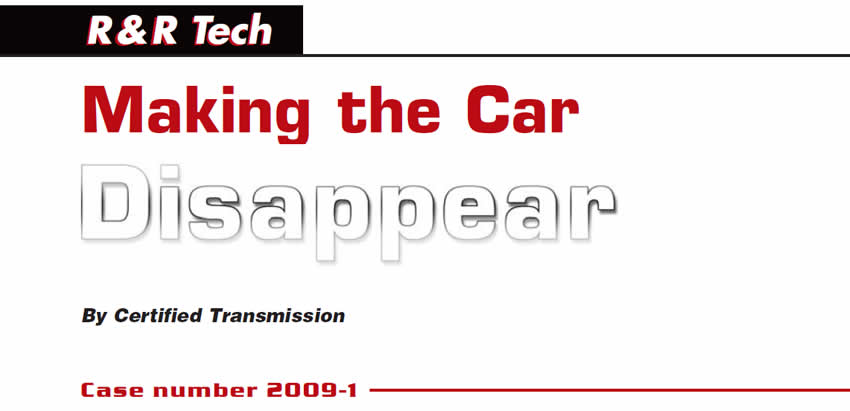Back to the Basics: Strategy-Based Diagnosis
Later that day they showed up to drop off the car, a 2002 Volkswagen Jetta GLS with 72,000 miles (Figure 1). The owner of the car started to explain the concern he was having: “Everything was working great, then one day the check engine light came on and it started to shift real hard and fast. I took it to (shop A) and they said it was either the transmission control module or the transmission. If it was the module, it was going to be $2,000; if it was the transmission, $5,000 plus reprogramming and any wire repairs; or it could need both. I paid them $145 for looking at it, but I wanted to get a little more specific about what it was going to cost, so I took it to (shop B); they had it for a week and said they thought it needed a control module but were not real sure and asked me to take it somewhere else, so here I am.”
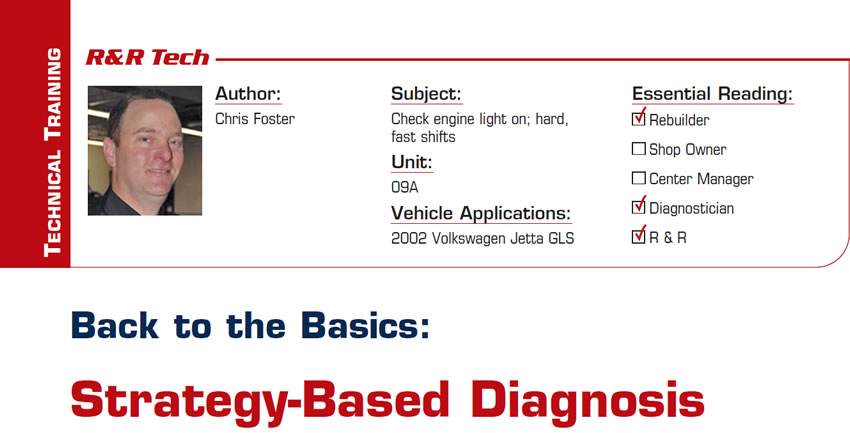
Don’t Forget the Basics
Instead of choosing just one success story that applies to one vehicle, how about writing something that applies to all vehicles? The thought that I want to convey is to pay attention to the simple things and small details alike, both when diagnosing a problem and when removing and reinstalling a transmission.
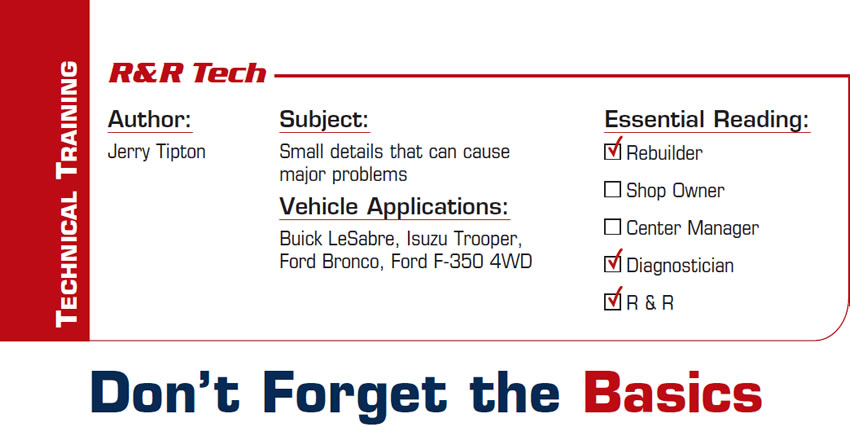
It’s not just the Transmission
Recently a customer called to get a quote for a 1998 Ford F-150 4X4 with the 4.6-liter V-8 engine and 4R70W transmission. The price was given and we had one in stock. A couple of days later they called and told us they needed the transmission. It was still in stock, but it was late in the day so we made arrangements to deliver it to them the next day.
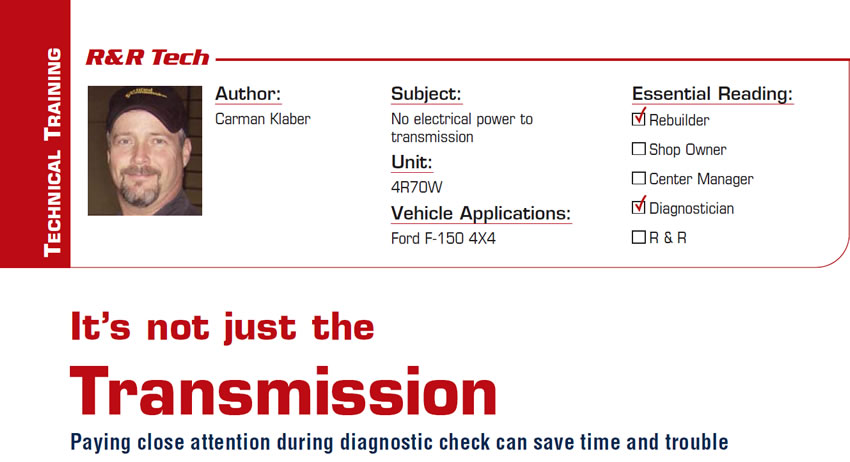
Don’t Overlook the Basics
Our carry-out customer was working with a 1999 Chevrolet Suburban 4WD equipped with a 4L60-E transmission. Their technician was able to re-create a slip/flare condition on the 2-3 shift. The fluid was full but a little burnt. A quick hookup of the scan tool revealed no codes existing in the system. Pressure gauges were attached for testing and indicated around 75 psi at idle, and 125 psi at the half throttle position.
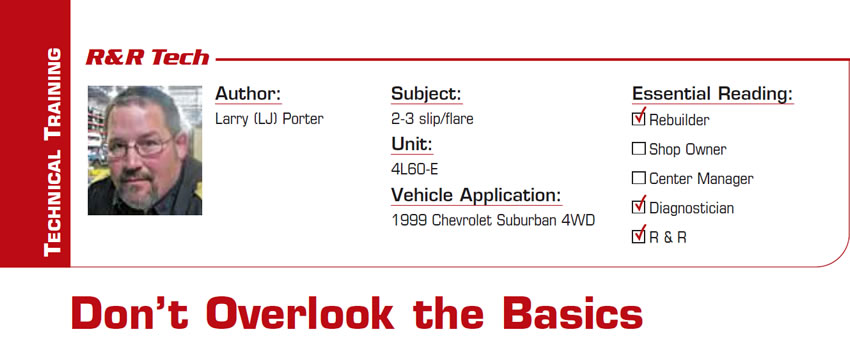
Great Customer Service: The Dream and the Reality
We recently got a call on our tech line from a customer who had bought an F5A51 unit for a 2003 Kia Sedona. Their sole concerns were delayed engagements and sluggish shifting when hot. The vehicle was in a remote location several hundred miles away. After going through our trouble tree, we determined that this customer had an internal transmission issue.
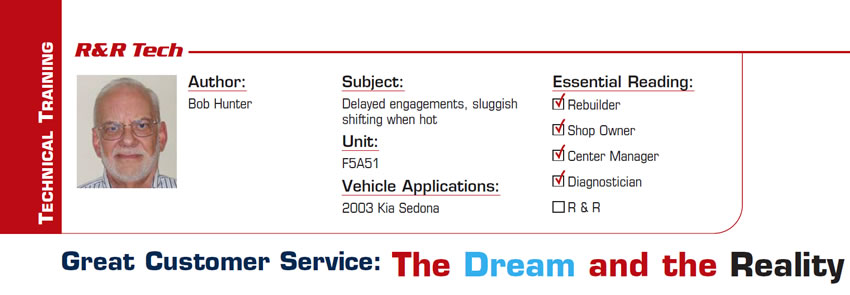
Intermittent TCM Operation Creates Diagnostic Puzzle
She said her 1999 Dodge Caravan wasn’t shifting properly and her transmission-range indicator on the dash had a malfunction, and not even the Dodge dealership could find the problem. After performing our Certi-care evaluation, which includes test-driving the vehicle, scanning for service codes and performing a visual inspection, I was unable to find anything wrong. There were no codes, shift points were good, fluid was in good condition and the range indicator was working properly.
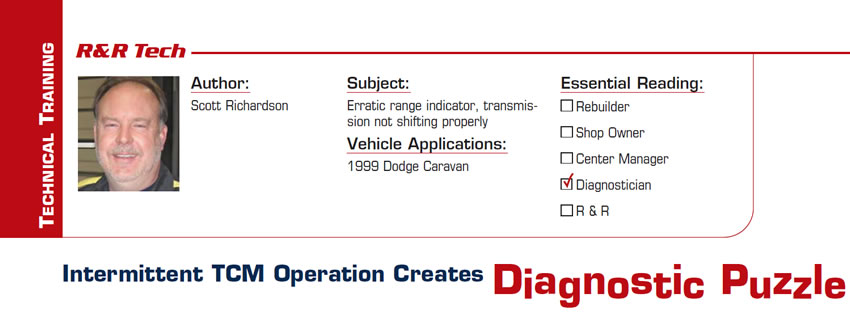
Installer, or Plumber?
Shortly after the installation, the company called our warranty department to report that the transmission was binding in both forward and reverse. It hadn’t been on the road yet because it would barely back out of the bay. They stated that it would roll only a few feet and the transmission would bind to the point of stopping the truck in both forward and reverse. Since our facility that sold the unit was a full-service shop, it was decided that it would be best for the utility company to bring the truck into our shop to diagnose and repair the problem.
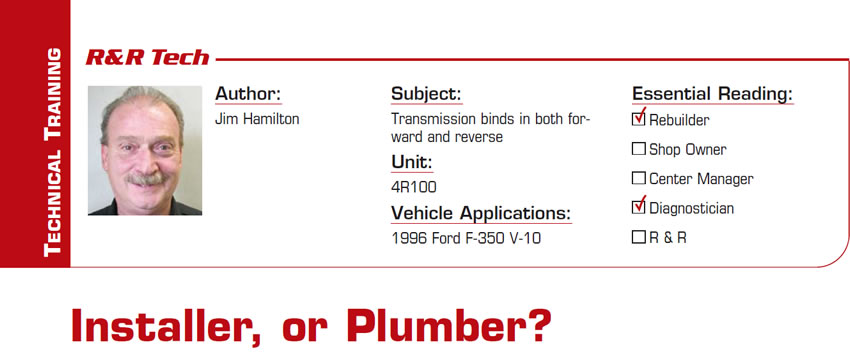
Pay Close Attention to Valve-Body Modifications
This particular call came in just like many others: The technician had already eliminated everything he could interpret as the possible root cause of the concern. The vehicle in question was a 2006 Dodge 2500 pickup with a 5.9-liter diesel and a 48RE transmission. The owner had bought the vehicle recently and had concerns that the transmission was not shifting properly.
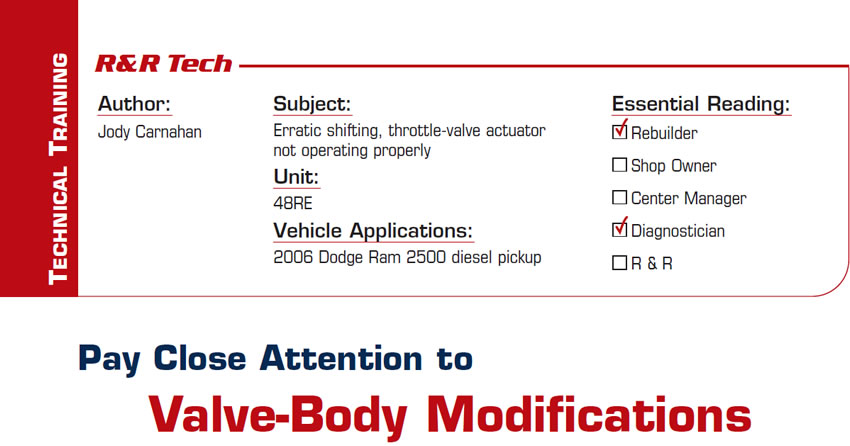
Don’t Blow Your Fuse
The vehicle involved was a 1998 Honda Passport 4WD with a 3.2-liter V-6 and 4L30-E transmission. The shift indicator in the cluster was not functioning properly, and the transmission was shifting hard. The indicator showed P in Park and 1 in D3, D2 and D1, and it didn’t light up any other time. This seemed to be pretty straightforward, since the mode switch (range sensor) has a high failure rate.
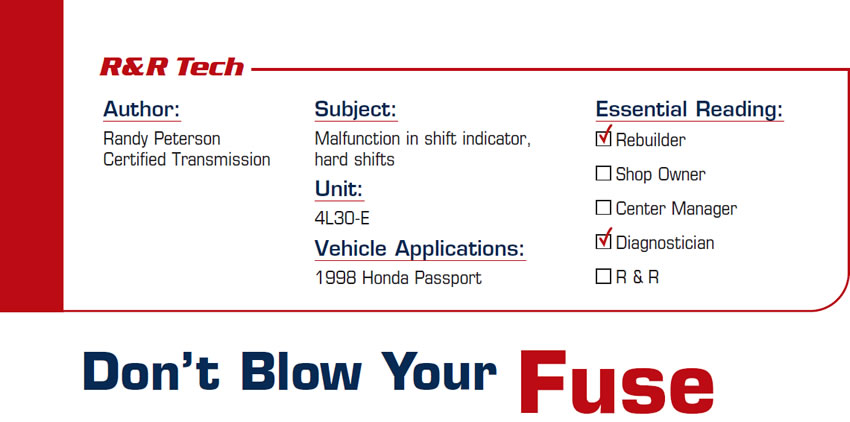
Different Transmission, Same Problem?
When you install a replacement transmission and the car still has the same problem it came in for, it makes you think the problem is with the car, not the transmission. On the other hand, if you’re a shop that rebuilds “in house” and installs the same transmission that came from the car, you now face the dilemma of whether you misdiagnosed the problem or failed to resolve it in the rebuild process.
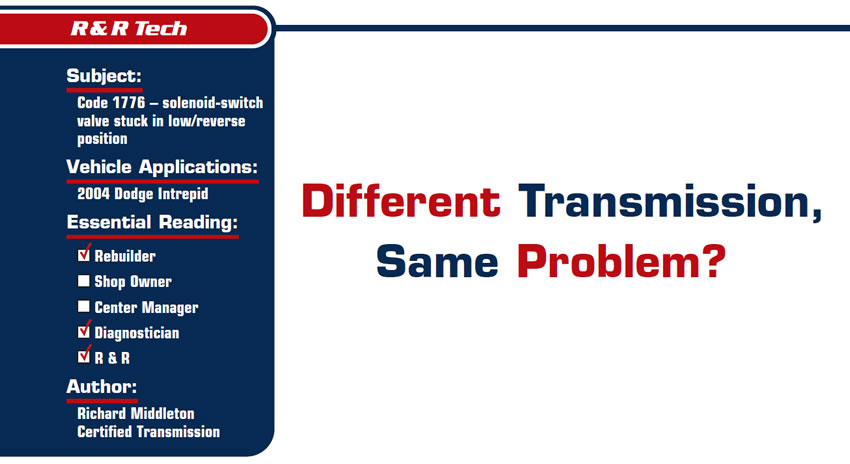
Extra Diagnostic Steps Prevent Mistaken Assumption
A 2000 Dodge Caravan with a 604 transmission was brought into one of our Certified Transmission locations with the customer concern of no shifts and no power. Our initial diagnostic checks confirmed that:
• The transmission was in limp mode
• The speedometer was inoperative
• The PRNDL lights were illuminated.
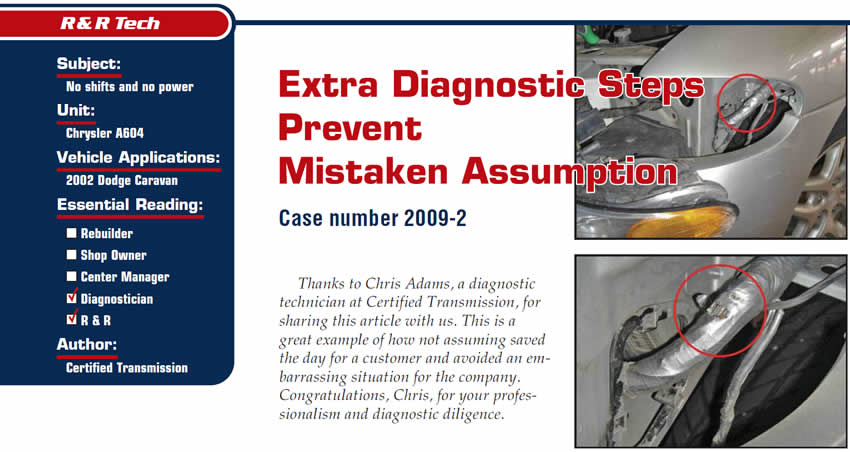
Making the Car Disappear
A 1997 Audi A4 Quattro 1.8L turbo (ZF 5HP19) with a complaint that the transmission lost reverse once it was warmed up.
This transmission has a history of chronic reverse problems. The vehicle was scanned with a MODIS and presented the following codes: 00652, 18010 and P1602.
